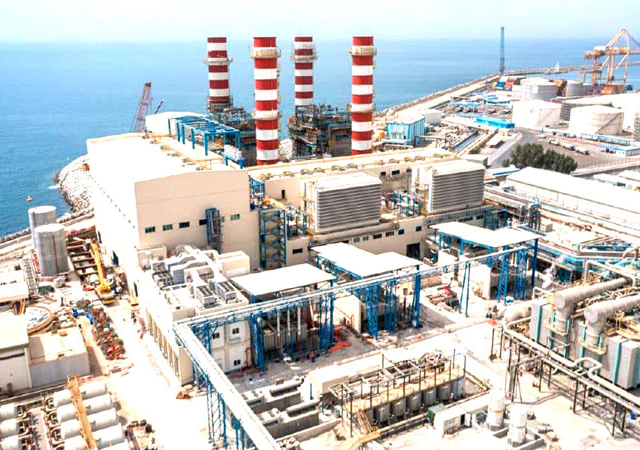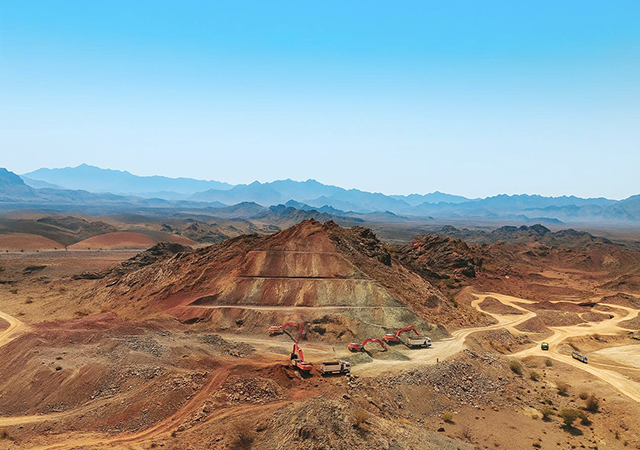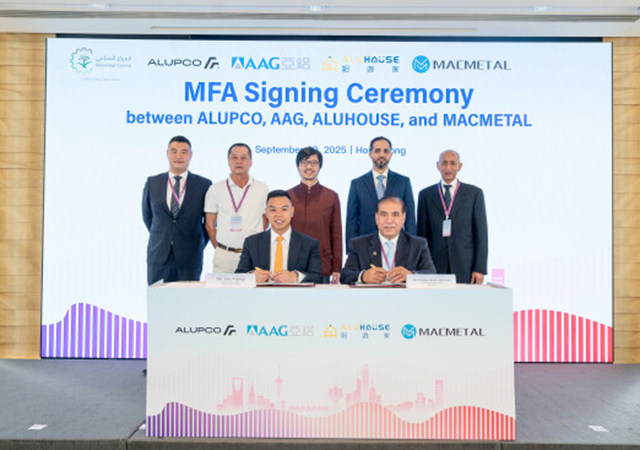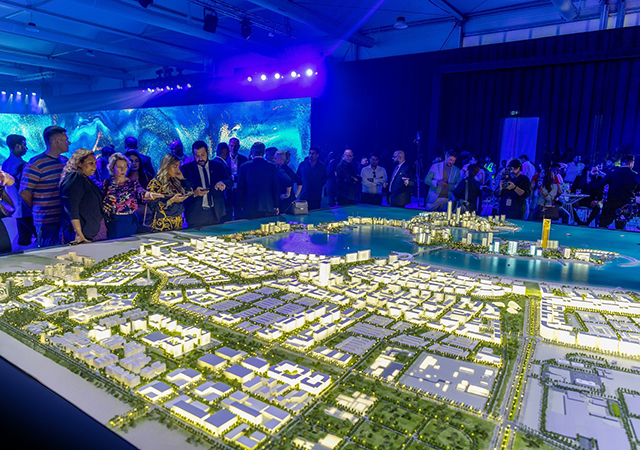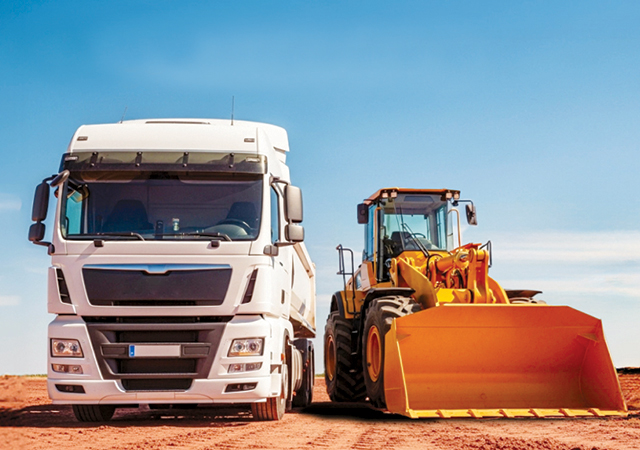
 An artist’s impression of the Expo site at night time.
An artist’s impression of the Expo site at night time.
Riyadh, basking in the glow of its Expo 2030 victory, is now setting the gears in motion to sculpt a venue that will dazzle the world and provide a showcase for human ingenuity. This is in addition to the multiple mega developments already under way in the Saudi capital city as it drives its ambition to position itself among the world’s most liveable cities and double its population to over 15 billion.
Fuelled by Saudi Arabia’s bold 2030 vision, the city has already embarked on a transformative journey that has seen the launch of big-ticket developments such as three of the Saudi sovereign wealth fund Public Investment Fund’s (PIF) five giga projects – Diriyah, Qiddiya and Roshn – to create a tourism and cultural destination with diverse attractions, adventure and thrills, and entertainment while addressing the social housing needs of the kingdom.
These have been complemented by other landmark projects such as Sports Boulevard, King Salman Park, King Salman Non-Profit City (Misk City) and the expansion of King Abdullah Financial District (KAFD).
Surpassing even these ambitious developments in scale, in February last year, Riyadh unveiled plans for the awe-inspiring New Murabba development which involves setting up the world’s largest modern downtown in the capital with an immersive destination.
Now, following its successful bid to host the Expo 2030 World, the kingdom is set to build a world-class venue for the prestigious event at a 6-million-sq-m site near the state-of-the-art King Salman International Airport, which itself aspires to be among the largest of its kind in the world.
According to Saudi Arabia’s Minister of Investment Eng Khalid bin Abdulaziz Al-Falih, Expo 2030 Riyadh has been allocated a budget of $7.8 billion, which will further attract broader investment in the capital.
On the sidelines of the recent COP28 meeting in Dubai, Princess Haifa bint Mohammed Al Saud, the Vice Minister of Tourism, said the kingdom will spend nearly $92 billion for this mega event and other massive projects such as the King Salman Park and Saudi Green Initiative (SGI) as well as decarbonisation of the urban transport in the next seven years.
Expo 2030 Riyadh – which is the largest global platform for presenting the latest achievements and technologies, promoting international cooperation in economic development, trade, arts and culture, and disseminating science and technology – is looking to welcome 40 million visitors when it is opened between October 2030 and March 2031.
Eng Khalid also indicated that the Saudi Vision 2030 targets national-level investments of over $3.3 trillion by the end of the decade, with at least 30 per cent allocated to the city of Riyadh.
Meanwhile, following the recent completion of the main Riyadh Bus network, a significant component of the King Abdulaziz Project for Riyadh Public Transport, the Saudi capital awaits the launch of the $23-billion Riyadh Metro. The six-line metro network is expected to grow further and bids have now been invited for Line 7, which will connect New Murabba, Diriyah and the new airport.
The main Riyadh Bus network comprises 54 routes, encompassing a total of 2,145 stations and stops, and served by a fleet of 679 buses. An additional 33 routes will seamlessly connect with the Riyadh Metro once it opens.
Another key transportation development, which will boost Riyadh’s connectivity with both the western and eastern regions of Saudi Arabia, is the $7-billion Landbridge project. In December, a consortium of Italian consulting and project management company Italferr, Spanish engineering group Sener and US-based construction management expert Hill International were awarded the project management consultancy (PMC) contract for the development. The project includes constructing a new 950-km railway line between Riyadh and Jeddah, which will continue for 146 km to King Abdullah Port, and upgrading the Dammam-Riyadh line, which includes the construction of 87 km of new track. A key component of the line is the Riyadh bypass, which will connect the existing network in the north of the city to the south. It is split into two packages: the first has 67 km of track and the second has 35 km.
Airport
Saudi Arabia is set to build one of the largest airports in the world – King Salman International Airport – which will spread over a 57-sq-km area in Riyadh.
Being designed by leading architectural firm Foster+Partners, the airport will boast six parallel runways and comprise the existing terminals named after King Khalid. It will also include 12 sq km of airport support facilities, residential and recreational facilities, retail outlets, and other logistics real estate.
Once operational, the airport will be able to handle 120 million travellers by 2030 and 185 million travellers, with the capacity to process 3.5 million tonnes of cargo, by 2050.
The new airport will boost Riyadh’s position as a global logistics hub, stimulate transport, trade and tourism, and act as a bridge linking the East with the West, according to Foster+Partners.
The new King Salman International Airport reimagines the traditional terminal as a single concourse loop, served by multiple entrances and connects passengers to the sensory experiences of the city. It is being designed as an aerotropolis centered around a seamless customer journey, and world-class efficient operations.
The new airport aims to achieve LEED Platinum certification and will be powered by renewable energy.
Diriyah
The $63.2-billion programme to redevelop Diriyah town on the north-western outskirts of Riyadh is making remarkable headway with the project now moving to the second phase of the masterplan.
In line with this, it has unveiled plans for the Royal Diriyah Opera House, a first-of-its-kind project in the kingdom, as part of the second phase.
Among other developments, Diriyah Company celebrated the completion of the Western Ring Road Tunnel last month and has also broken ground on three renowned hotels – Oberoi, Aman and Six Senses – as part of its Wadi Safar masterplan (see Page 17).
Qiddiya
Riyadh’s entertainment hub Qiddiya has reinforced its commitment to becoming one-of-its-kind destination with the unveiling of two spectacular developments in as many months: the iconic Prince Mohammed bin Salman Stadium, which will be the world’s first fully integrated venue with a combined retractable roof, pitch and LED wall; and the Gaming and Esports District, which aims to be the first multi-use gaming and esports district in the world (see Page 14).
Sports Boulevard
Work on the first phase of the Sports Boulevard, the world’s longest linear park is in full swing with several key milestones having been achieved. The first phase of the PNU internal cycling loop has been completed, as has more than 74 per cent of the construction work on the promenade and 86 per cent on the cycling bridges. The overall structure of the Prince Turki Al-Awwal and Prince Mohammed bin Salman Roads intersection is reaching 86 per cent completion with more than 50,000 cu m of concrete used to build it, the Sports Boulevard tweeted last month.
 |
|
Work on the Prince Turki Al-Awwal and Prince Mohammed bin Salman Roads intersection at the Sports Boulevard project is reaching 86 per cent completion. |
Sports Boulevard Foundation has also signed a partnership with Albilad Capital and Ajdan, to set up a fund to develop a mixed-use project valued at SR1 billion within the Arts District.
Sports Boulevard is one of the four mega projects launched by Saudi King Salman bin Abdulaziz in 2019. An innovative destination, it will contribute to fulfilling a key goal of Saudi Vision 2030 to promote Riyadh’s position among the world’s most liveable cities. It includes 4.4 million sq m of greenery and open spaces, and up to 50 multidisciplinary sports facilities and artistic landmarks.
Extending 135 km and connecting Riyadh from west to east, Sports Boulevard will create a modern oasis in the capital city and will offer a range of healthy lifestyle options.
King Salman Park
King Salman Park, the second of Riyadh’s four mega projects launched by Saudi King Salman in 2019, has unveiled plans for a new mixed-use real estate development project at a total investment of SR4 billion.
The King Salman Park Foundation (KSPF) has joined hands with Saudi developer Naif Al Rajhi Investment Company to develop the project over an area of more than 290,000 sq m. Naif Al Rajhi Investment Company is master lessee of the project.
The mixed-use project will boast over 1,500 residential units that will include Salmani-style apartments and townhouses overlooking the park, along with 140,000 sq m of gross leasable areas for offices and retail facilities, hotels, schools, and several educational, health, sports, recreational and social facilities.
The 16.7-sq-km King Salman Park is one of the world’s most ambitious and transformative urban regeneration projects, harmoniously bringing together people, nature and a city, a green oasis in the heart of Riyadh. The park will also support Riyadh’s global profile, contributing to making it one of the world’s most liveable cities.
Construction work on the project is currently in progress. Construction work has been completed on the visitor’s pavilion, SEC substation and the plant nursery, while work on the Royal Arts Complex, the loop bridges, boulevard bridge and tunnel is well advanced.
King Abdullah Financial District (KAFD)
Riyadh’s financial and business hub, King Abdullah Financial District Development is poised for expansion. Located in the heart of the Saudi capital, KAFD features 1.6 million sq m of state-of-the-art office space, world-class facilities, and iconic luxury residences designed to transform how urban communities live, work, and play.
It is the first vertical city solution in Saudi Arabia and is the world’s largest Leadership in Energy and Environmental Design (LEED)-certified mixed-use financial district.
KAFD is owned and managed by the King Abdullah Financial District Development and Management Company, which has awarded the US’s Parsons Corporation a five-year contract to provide key project and construction management services for the expansion of the prime business and lifestyle destination on new, undeveloped land.
Parsons is working with King Abdullah Financial District Development and Management Company, to ensure all new buildings being constructed obtain LEED certification, including the first municipal fire station in the region to receive Platinum certification.
Misk City
Mohammed Bin Salman Nonprofit City (Misk City), the first non-profit city in the world being developed on a 3.4-sq-km area, in April last year launched its first series of distinctive Grade A corporate office buildings next to the Al Mishrak zone, along Wadi Hanifah. Al Mishraq Zone is a mixed-use development with a walkable urban environment hosting a range of retail, food and beverage, leisure and entertainment options.
The cluster of three four-storey buildings, located within the central Misk Forum district, are designed to provide a readily adaptive workplace offering a collaborative environment. Global architectural network RMJM is working on the design of these buildings.
Misk City will boast a residential cluster including 500 villas and townhouses, as well as 6,000 apartments with multiple floor plans that can accommodate nearly 18,000 residents.
Last year, IHG Hotels & Resorts signed a management agreement with Mohammed Bin Salman Nonprofit City for a new Hotel Indigo, a new-build hotel featuring 234 guestrooms and suites, as well as 138 serviced apartments which is scheduled to open in 2025.
Housing
Building on the success of its flagship Sedra development, Roshn Group, a PIF-backed Saudi giga project and a leader in real estate development, has broken ground at Warefa, a mixed-use community project in Riyadh, and launched sales for residences at the project.
Warefa will offer Saudi residents high-quality, integrated living in the rapidly developing district of Al Janadriyyah. It will comprise 1,609 units in the first phase of the project, all supported by Roshn’s mix of civic amenities and attractive public spaces.
Covering an area of 1.4 million sq m, Warefa will include more than 2,300 units in total to be built as per Salmani architecture and contain 160,000 sq m of public parks and open spaces.
Meanwhile, early last year, National Housing Company (NHC) – the investment arm of the Ministry of Municipal and Rural Affairs and Housing – launched its largest new residential suburb, Al Fursan, in the northeast of Riyadh and the second phase of ‘Khuzam Suburb’, representing the largest real estate supply in the capital city.
Spanning over a 35-million-sq-m area, Al Fursan boasts more than 50,000 residences as well as over 190 key facilities and commercial centres surrounded by 6 million sq m of green space.
A total of 18 investment agreements worth more than SR24 billion were signed by NHC and the Ministry of Housing with leading real estate developers to push ahead with Al Fursan suburb’s projects.
NHC is also developing the Al Shafa Residential Land in Riyadh, and late last year signed up Retal Urban Development Company to develop 366 residences in Zones 1 and 2 of the development at an estimated cost of SR290 million. The project, which will come up over a 133,934-sq-m area, is expected to be completed in 2027.













(5).jpg)








.jpg)











